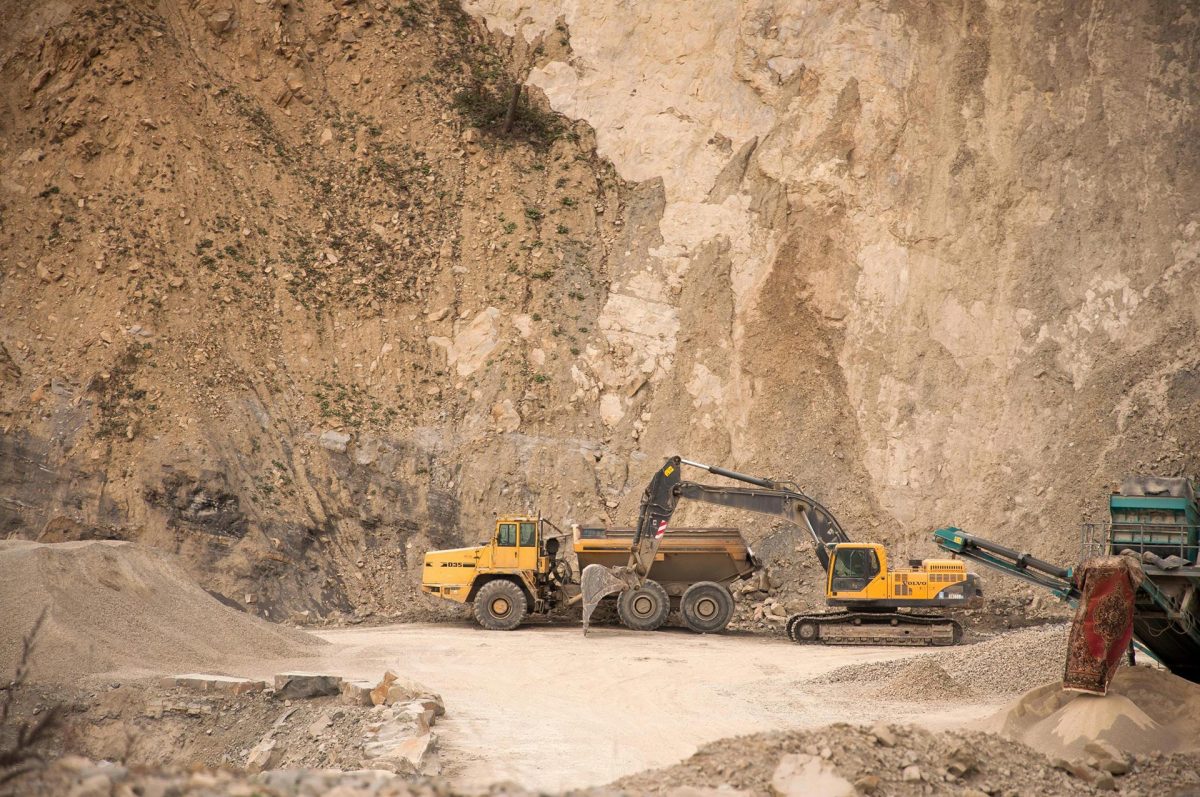Expert Survey Solutions that deliver.

Ensuring the safety of workers in mines and quarries is paramount, and in the UK rigorous safety standards and regulations are in place. Mines and quarry environments inherently pose various risks, such as cave-ins, equipment accidents, and exposure to hazardous materials. To address these challenges, mining and quarrying companies implement a multifaceted approach to safety. […]
Ensuring the safety of workers in mines and quarries is paramount, and in the UK rigorous safety standards and regulations are in place. Mines and quarry environments inherently pose various risks, such as cave-ins, equipment accidents, and exposure to hazardous materials. To address these challenges, mining and quarrying companies implement a multifaceted approach to safety.
Comprehensive training programmes are at the forefront of safety efforts. Workers are educated on risk assessment, proper equipment operation, and emergency procedures, while regular drills and safety meetings help keep safety practices fresh in the minds of workers.
Strict adherence to safety regulations is mandatory. Agencies like the Health and Safety Executive (HSE) enforce regulations specific to mining and quarrying, and cover everything from ventilation and dust control to the maintenance of equipment.
Technological advancements also play a pivotal role. Employing modern monitoring systems, automation, and wearables enhances safety by providing real-time data, and reducing human exposure to risks.
Mining and quarrying companies in the UK are subject to a range of safety regulations designed to protect workers and the environment. Some key safety regulations and guidelines include:
Health and Safety at Work Act 1974: Health and Safety at work is a fundamental legislation that outlines the general duties of employers to ensure the health, safety, and welfare of their employees, as well as others who may be affected by their activities. It forms the foundation of health and safety regulations in the UK.
Mines Regulations 2014: The Mines Regulations specifically apply to mines and set out detailed provisions for mine safety. They cover various aspects, including the management of mine operations, safety management systems, risk assessment, ventilation, and emergency procedures.
Quarries Regulations 1999: The Quarries Regulations are specific to quarries and govern safety measures within quarrying operations. They address issues such as hazard identification, risk assessment, the design and maintenance of quarry workings, and blasting operations.
Control of Substances Hazardous to Health (COSHH) Regulations 2002: COSHH regulations require companies to control exposure to hazardous substances, including chemicals used in mining and quarrying. This includes proper storage, handling, and disposal of such substances.
The Provision and Use of Work Equipment Regulations 1998 (PUWER): PUWER sets out requirements for the safe use of work equipment, including machinery and vehicles commonly found in mining and quarrying operations.
Explosives Regulations 2014: The Explosives Regulations govern the storage, handling, and use of explosives in mining and quarrying. They include provisions for licensing, safety precautions, and record-keeping.
Reporting of Injuries, Diseases, and Dangerous Occurrences Regulations 2013 (RIDDOR): Under RIDDOR, employers are required to report certain workplace accidents, injuries, and diseases to the appropriate authorities, ensuring that lessons are learned and corrective actions are taken.
In addition to worker safety, mining and quarrying companies must comply with environmental regulations to minimise the impact of their activities on the surrounding environment, including issues related to pollution, noise, and biodiversity.
Mining and quarrying companies are encouraged to establish robust Safety Management Systems tailored to their specific operations. These systems help identify and manage risks, monitor compliance, and promote a culture of safety.
It’s important for mining and quarrying companies in the UK to stay updated with these regulations, as they may evolve over time, and compliance with these regulations is crucial for maintaining a safe and responsible industry.
Technology has a significant role in enhancing safety measures within mines and quarries by introducing innovative solutions that mitigate risks and improve overall operational safety. Examples include:
When the safety of personnel is so important, and even risking equipment might be a mistake, our Elios drone is the ideal solution before making a plan of action. With high-resolution cameras and thermal imaging providing a clear picture of what’s going on, managers of mines and quarries can easily assess the situation as it is now, and what may evolve. Drone inspections are a powerful tool that are significantly safer than other methods, and are more cost effective than others too. To discuss a survey for your site, get in touch.
Trust Angell Surveys for cutting-edge technology, expertise and timely delivery when it matters.